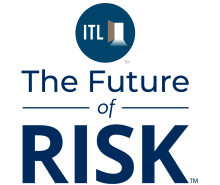The annual Allianz Risk Barometer found that these are the top five risks for the year ahead, as voted for by a number of aviation sector experts around the world:
In fifth place, our respondents flagged the shortage of skilled workforce. While this actually represents a new entrant on the top five risks list, few will be surprised at its inclusion. An issue for the industry since before COVID-19, aviation continues to battle with labor force limitations, with demand far outstripping supply. The reasons include significant numbers of retirements during the pandemic; a lack of appeal in the profession; insufficient training capacity to meet demand in any event; and the cost of training being unaffordable (in the case of flight crew).
In a review of the position in April 2024, the Royal Aeronautical Society highlighted research suggesting that over the next 10 years 300,000 more pilots, 300,000 more maintenance engineers and 600,000 more cabin crew will be required. These targets are unlikely to be met. The shortage will affect everyone in the industry and will have the effect (as is almost always the case in a supply shortage) of pushing up costs via wages. This increase will force a market correction by making aviation jobs more appealing; however, it is not one market participants welcome. Unfortunately, this risk looks like it is here to stay.
In fourth, surprisingly down from No. 1 in 2024 is political risks and violence. Notwithstanding the fragile ceasefire in the Middle East, we remain in a world beset by conflict – from the war in Ukraine to civil wars in Myanmar and Sudan. Throw in stateless terror organizations looking to exploit the disenfranchised and marginalized, and it is not surprising that political risk and violence remains a key risk for aviation in 2025. Civil aviation authorities and airlines must constantly dance on a tightrope to balance their potential security risks against the demand for provision of safe, commercially viable air travel for a global population that still wants to travel in greater numbers than ever before. Evolving geopolitical situations, along with new methods of waging war, require constant attention.
In third place, aviation industry respondents are concerned about changes in legislation and regulation. This is a new entrant on the list this year and is related (among other things) to the evolving landscape of sustainability requirements. This is likely to become even more the case with the shift in the position of the U.S. in relation to the Paris Agreement and environmental, social, and governance (ESG) regulation.
Global aviation companies are in the unenviable position of having to comply with both European standards still focused on Net Zero by 2050 and a U.S. government loosening requirements, at least in the short term. The implications of the European Union's Corporate Sustainability Reporting Directive (CSRD) are yet to be fully borne out. A regulatory framework to standardize sustainability reporting across industries, the CSRD is likely to add costs consequences for those needing to comply. With the complexity (and potential repercussions of misreporting) and a shifting regulatory landscape, it is therefore no surprise that such regulation is a key concern for those in the aviation sector.
See also: 5 Ways Drones Are Changing Insurance Claims
Just off the top spot, in second place, is business interruption – up from No. 5 a year ago. Linked to both the shortage of skilled labor and political instability, the fragility of aviation supply chains remains a significant concern for the industry. In something of a perfect storm, there have been both delays to new equipment delivery, but also problems with existing aircraft and engines requiring maintenance (and the potential grounding of aircraft as a result).
The International Air Transport Association (IATA) has reported that the average age of the global fleet has risen to a record 14.8 years (a significant increase from the 13.6 years average from 1990-2024), with a record backlog for new aircraft of 17,000 planes. These issues are having significant effect on operators who are forced to bear significant cost via expensive (hitherto unplanned) maintenance, rising lease costs due to aircraft shortage (IATA estimates 20% to 30% higher than 2019), scarcity of spare parts and increased operating costs as a result of operating older aircraft while awaiting new, more efficient equipment. This can also have repercussions in relation to sustainability plans and targets – older aircraft have higher emissions: IATA report that fuel efficiency was unchanged between 2023 and 2024, vs. a historic 1.5% to 2% improvement trend. The continued operation of older aircraft also has an effect further down the food chain – with smaller operators in developing markets also having to wait longer to upgrade their secondhand aircraft and the spares market affected by fewer older aircraft being stripped down. It is no surprise that this is such a concern for the aviation industry.
At No. 1, the risk most concerning the aviation industry in 2025 is cyber incidents. At No. 2 in 2024, the risk has made the jump to top position after a year with notable high-profile incidents such as the CrowdStrike outage in July, demonstrating the fragility of the global aviation industry's technological reliance.
See also: Cyber Incidents Top Global Business Risks in 2025
Perhaps the reason for cyber incidents' place at the summit can be put down to the truly enormous and varied threat such a term encompasses: Cybercrime, IT outages, malware/ransomware attacks, data breaches and the associated fines and penalties are all included. This is not to mention the potential for malicious acts from hostile operators on actual flight operations, such as GPS spoofing – a sophisticated attack that exploits weaknesses in an aircraft's navigation system and has become increasingly common in areas of geopolitical instability such as Eastern Europe and the Middle East.
All told, aviation companies have a lot to worry about. Aside from any business interruption and cost of remediation, there is the risk of reputational damage, litigation from consumers, regulatory action and fines and ransom requests.
As the aviation industry continues its digital transformation journey, through the further integration of artificial intelligence (AI) and a significant transition to cloud infrastructure, maintaining robust cyber security while continuing to innovate remains a critical challenge. It is therefore no wonder that cyber risk is at the forefront of the aviation industry's concerns for 2025.






